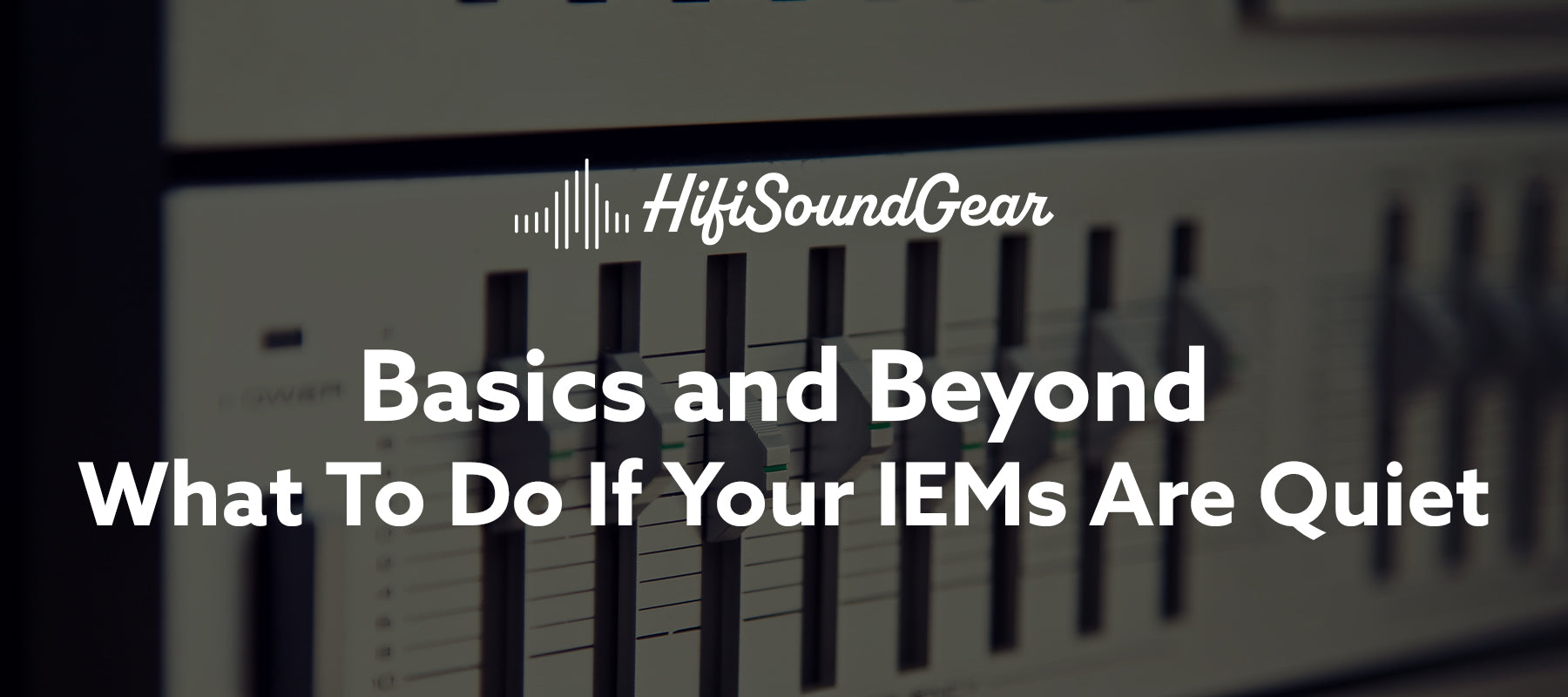
What To Do If Your IEMs Are Quiet
Ever experienced that deflating moment when your premium IEMs sound more like distant whispers than the sonic powerhouse you invested in? Trust me, I feel your pain!
As someone who's spent countless hours fine-tuning audio setups, I know the frustration of insufficient volume from in-ear monitors can have you questioning your entire audio chain.
Here's the kicker: according to recent audiophile community surveys, nearly 30% of IEM users report volume issues as their primary complaint. But fear not – we're about to dive deep into the world of decibels and drivers to get your IEMs singing at their full potential!
Table of Contents
- Understanding Why Your IEMs Are Playing Hard to Hear
- Quick Fixes for Volume Vampires
- The Technical Deep Dive: Impedance and Amplification
- Software Solutions and Digital Diagnostics
- When Hardware Upgrades Are the Answer
- Professional Maintenance and Troubleshooting
- Final Thoughts: Turning Up The Volume
Understanding Why Your IEMs Are Playing Hard to Hear

Let's start with some audio truth bombs. Your IEMs' volume isn't just about cranking up that volume knob (though wouldn't that be nice?). The real story involves a delicate dance between multiple technical factors:
First up, we've got impedance matching – think of it like a sonic tango between your IEMs and your source device. When these partners aren't in sync, you'll get less volume than you deserve. High-impedance IEMs (typically above 32 ohms) often need more voltage to reach their full potential, while low-impedance models might be getting choked by too much output impedance from your source.
Then there's sensitivity, measured in dB/mW – essentially how efficiently your IEMs convert power into sound. Higher sensitivity ratings (think 110 dB/mW and up) mean more volume from less power, while lower ratings might explain why you're reaching for that volume knob.
Quick Fixes for Volume Vampires
Before we dive into the technical deep end, let's tackle some immediate solutions that might just save the day:
- Check Your Seal: A proper seal is absolutely crucial for optimal volume. Those fancy IEMs won't do you any good if they're letting sound escape! Try different tip sizes or materials – sometimes a simple tip swap can make a world of difference.
- Clean Those Nozzles: It's amazing (and slightly gross) how much earwax and debris can accumulate in IEM nozzles. Regular cleaning with appropriate tools can restore lost volume. Think of it like unclogging a tiny audio pipeline!
- Verify Source Settings: Many devices have hidden volume limiters or equalizer settings that might be cramping your style. iOS users, I'm looking at you – check that volume limit setting!
The Technical Deep Dive: Impedance and Amplification

Now we're getting to the good stuff! If basic troubleshooting hasn't solved your volume woes, it's time to consider the electrical side of things. Here's where understanding impedance matching becomes crucial:
- Output Impedance (source) should ideally be less than 1/8th of your IEM's impedance
- Power Requirements can be calculated using your IEM's sensitivity and impedance ratings
- Amplification might be necessary, especially for high-impedance IEMs
A dedicated amplifier can be a game-changer, providing clean power and proper impedance matching. Look for options specifically designed for IEMs – they'll have appropriate gain settings and low output impedance.
Software Solutions and Digital Diagnostics
Sometimes the solution lives in the digital realm. Here are some software tweaks that can help:
- Implement System-Wide EQ: Sometimes perceived volume issues are actually frequency response problems. A well-tuned equalizer can make your IEMs sound louder without actually increasing overall volume.
- Volume Normalization: Enable this in your music player to ensure consistent levels across your library.
- Bit-Perfect Playback: Ensure your audio chain isn't degrading the signal through unnecessary processing.
When Hardware Upgrades Are the Answer

If software solutions aren't cutting it, it might be time to consider some hardware upgrades:
- Balanced Cables: These can provide more power and better channel separation
- DAC/Amp Combos: Purpose-built for IEMs with appropriate power output
- Better Source Devices: Some DAPs (Digital Audio Players) are specifically designed for driving demanding IEMs
Professional Maintenance and Troubleshooting
For persistent issues, consider these professional approaches:
- Regular Professional Cleaning: Every 3-6 months depending on usage
- Driver Testing: To identify any physical damage or deterioration
- Impedance Testing: To ensure your IEMs haven't developed any electrical issues
Remember, preventing volume issues is often easier than fixing them. Establish a regular maintenance routine and always store your IEMs properly to prevent damage.
Final Thoughts: Turning Up The Volume
Getting the most volume out of your IEMs is a journey that combines technical knowledge with practical application. Start with the basics – proper fit and clean equipment – before diving into more complex solutions involving amplification and impedance matching.
Remember, while it's tempting to just crank up the volume, the goal is to achieve optimal listening levels without compromising sound quality or risking hearing damage. With the right combination of solutions from this guide, you'll be well on your way to experiencing your music the way it was meant to be heard – clear, powerful, and perfectly voiced!
Elevate Your Listening Experience With These Related Articles
Enjoyed this article? Feel free to check out these related topics!

